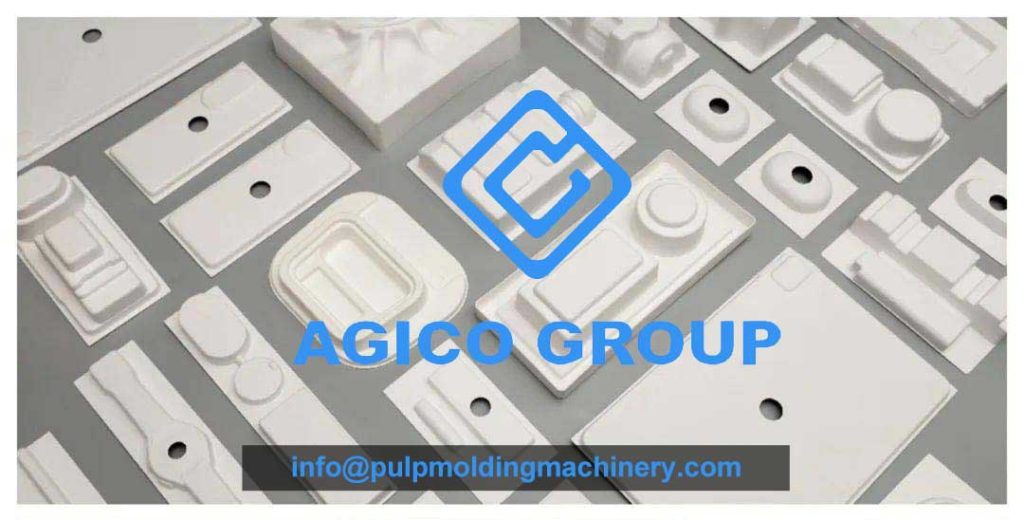As a pulp molding machinery supplier for industrial package design solutions in China, AGICO invested a lot in molded pulp packaging design, which is one crucial factor in paper tray quality control. Pulp Molds are a key component, their design and development technology require high standards and experience. If you are wondering how to improve the pulp tray quality, here are the key factors in the molded pulp packaging design.

Key Factors in Molded Pulp Packaging Design
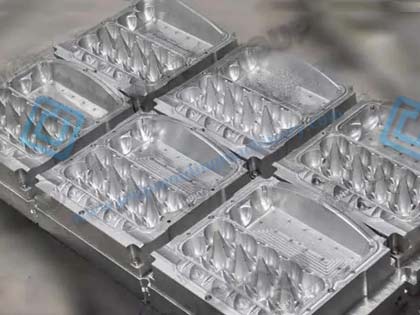
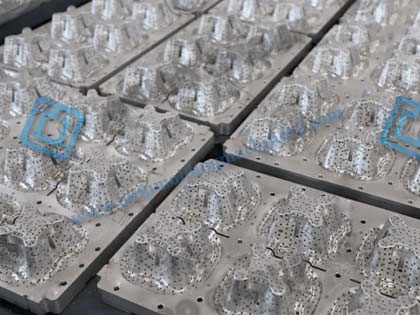
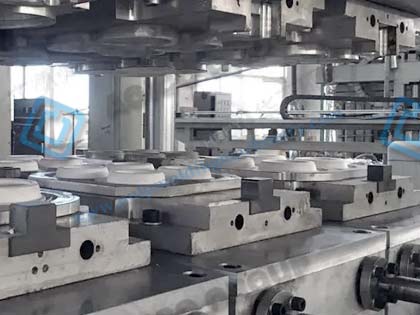
Structural Requirements
- Strength and rigidity: Pulp molded products need to have sufficient strength and rigidity to withstand various loads and pressures during use.
- Shape and size: The mold design must ensure that the shape and size of the final product are accurate so that it can fully meet the expected functions and adaptability in actual use.
Molding Process Conditions:
- Demolding property: Pulp molded products such as egg trays can smoothly removed from the mold without damaging the product after molding.
- Flowability: The pulp should have good fluidity in the mold to ensure that every detail can be filled with pulp and avoid bubbles or voids.
- Drying and curing: A lot of deform occurs during drying process, which can greatly impact the pulp tray quality.
Common Egg Tray Dimension Chart
| Packing egg range | Dimensions of egg tray (mm) |
|---|---|
| medium-sized egg | 290*290 |
| Large-sized egg | 300*300 |
| extra small- sized egg | 280*285 |
| medium-sized egg | 295*295 |
| Medium and small sized egg | 290*295 |
| Large-sized egg | 310*310 |
| Large-sized egg | 310*310 |
| Large-sized egg | 295*295 |
| Large-sized egg | 298*298 |
| medium-sized egg | 297*297 |
| medium and large-sizedegg | 298*300 |
| small- sized egg | 285*290 |
| Large-sized egg | 305*305 |
| extra large-sized egg | 320*320 |
| small- sized egg | 292*292 |
| extra small- sized egg | 280*280 |
Pulp Mold design and manufacturing requirements:
- Material selection: The factors affect pulp molding effect are wear resistance, corrosion resistance and thermal conductivity, AGICO suggest to choose the right pulp to improve the life and production efficiency of the mold.
- Manufacturing accuracy: The manufacturing accuracy of the mold directly affects the accuracy of the pulp molded product, so high-precision processing equipment and processes are required.
- Cost control: Under the premise of meeting functional requirements, mold design also needs to consider manufacturing and maintenance costs to maximize economic benefits.
What Types of Pulp Package Molds are Used in Molding Process
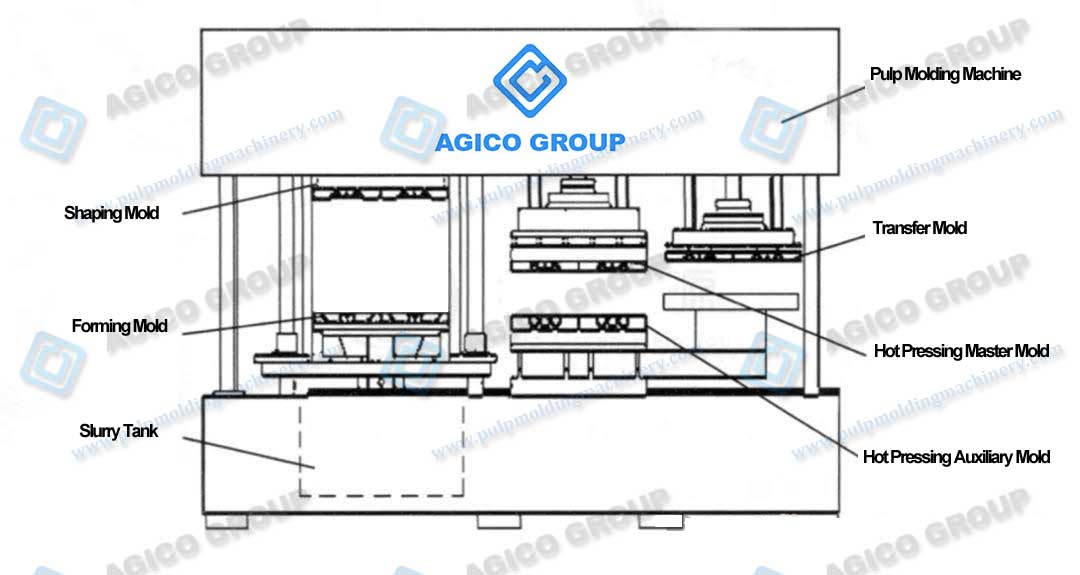
- Unified Product and Mold Design:
Before the step of pulp molding mold design, the pulp molded product structure must be fully analyzed and studied so that the economic rationality and technical feasibility of both product design and mold design can be coordinated and unified. - Understanding of Pulp Molding Process
During the molding process, pulp-molded products are formed on a single mold, requiring multiple entries into the mold during the manufacturing process. After molding process, they must be transferred to the cavity after the upper and lower molds are closed. The wet paper blank transferred to the shaping mold is formed after pressurization and heating in the shaping mold. - Pulp Molding Molds Types
Therefore, pulp molding molds are divided into forming molds, shaping molds, cutting edge molds, transfer molds, die-cutting molds, etc. There are 2 types of molding processes, one adsorption molding-upper mold, and compression molding-down mold. Compression molding molds are somewhat similar to rubber plastic molds, and adsorption molding molds are more special and complex. - Mesh Mold Design
Moreover, the molding of pulp-molded products is very different from that of rubber and plastic products molded in a mold cavity. The slurry used in the molding is an aqueous solution containing only about 10% fiber. It is necessary to ensure that extra water flows away, so the forming mold shall be used with a mesh mold.
Tips for Various Pulp Molding Molds Design
1. Absorption Forming Mold Design
- The Pulp Mold Set Structure consists of an upper mold, a lower mold, a mesh mold, a mold seat, a mold back cavity, an air chamber, etc. The mesh mold is the main body of the mold set. Since the mesh mold is woven from metal wire or plastic wire with a diameter of 0.15~0.25mm, it cannot be formed independently and must be attached to the mold surface to work.
- The Pulp Mold Back Cavity is a cavity formed at the back of the mold relative to the mold seat. It has a certain thickness and shape that is completely synchronized with the mold’s working surface. The male and female molds are shells with a certain wall thickness. The mold’s working surface and the back cavity are connected by evenly distributed small holes.
- The Absorption Mold is Installed On The Template of the molding machine through the mold seat. An air chamber is installed on the other side of the template, which is communicated with the back cavity. There are also two channels for compressed air and vacuum on it.
- Pulp Molded Products Shrink From Wet Paper Blanks to finished products due to the precipitation of water. The shrinkage rates of different positions of the same product are different and irregular, resulting in multi-directional and variable shrinkage changes in the product during the molding process, which makes it difficult to determine the reserve volume when designing the mold. Fortunately, the current packaging industry does not have high requirements for the manufacturing precision of pulp-molded products, and the empirical design method can still meet the requirements.
2. Pulp Shaping Mold Design
- The shaping mold is a mold with heating, pressurizing, and dehydrating functions that is directly placed into the wet paper blank after it is formed. The products made with the shaping mold have a smooth surface, accurate size, solidity, and good rigidity. Disposable tableware is manufactured using this mold. In industrial inner packaging, some small, precise, and large-quantity small items are packed in layers, and the packaging products between each layer are used for positioning. If pulp molded products are used, shaping molds are needed to make them.
- The general industrial inner packaging products can be directly dried without heat setting, they are designed single-sided. The pulp mold set includes an upper mold, a lower mold, a mesh mold, and a heating element. The upper or lower pulp mold with a mesh has drainage and exhaust holes. When press molding, the wet paper pulp is first squeezed into the shaping mold, and 20% of the water is squeezed out. The water content in the wet paper blank is 50-55%. After the wet paper blank is heated in the pulp mold, the remaining water is vaporized and discharged. The wet paper blank is squeezed, dried, and shaped to form a product.
- The mesh mold in the shaping mold will cause mesh marks on the product surface, and the mesh mold will quickly break during frequent extrusion. To solve this problem, our mold designer designed a mesh-free mold, which is made of copper-based spherical powder metallurgy. After multiple structural improvements and selection of the appropriate powder particle size over the past two years, the life of the mesh-free shaping mold is 10 times that of the mesh mold, the cost is reduced by 50%, and the paper products produced are of high precision and have smooth inside and outside surfaces.”
3. Pulp Molding Mold Design
- After drying, wet paper blanks can become deformed. If some parts are severely deformed, or if the product’s surface shape needs to be highly accurate, it must undergo a shaping process using a shaping mold. This type of mold requires a heating element and can be made with or without a mesh. Pulp Molded Products requiring forming should maintain a moisture content of 25-30% during drying to facilitate shaping.
- It is difficult for the molded pulp products to meet the requirement when controlling water content during forming production, that is where spray shaping mold is developed by pulp mold manufacturer. This mold has spray holes that correspond to the parts needing shaping. When in use, the thoroughly dried product is placed in the shaping mold, and when the mold is closed, the spray holes spray and heat press the product. This mold functions in a manner similar to a spray iron used in the garment industry.
4. Transfer Mold Design
The transfer mold is the final station in the entire process. Its primary function is to safely transfer the product from the shaping auxiliary mold to the receiving tray. The structural design of the transfer mold should be as simple as possible, and the suction holes should be evenly arranged to ensure that the product can smoothly adhere to the mold-fitting surface.
5. Pulp Molding Die Cutting Dies Design
To ensure neat and attractive paper mold products, those with higher appearance requirements undergo a trimming process. The die-cutting mold is employed to trim the rough edges of paper mold products and is also known as the trimming mold.
The new favorite of paper mold design—public mold
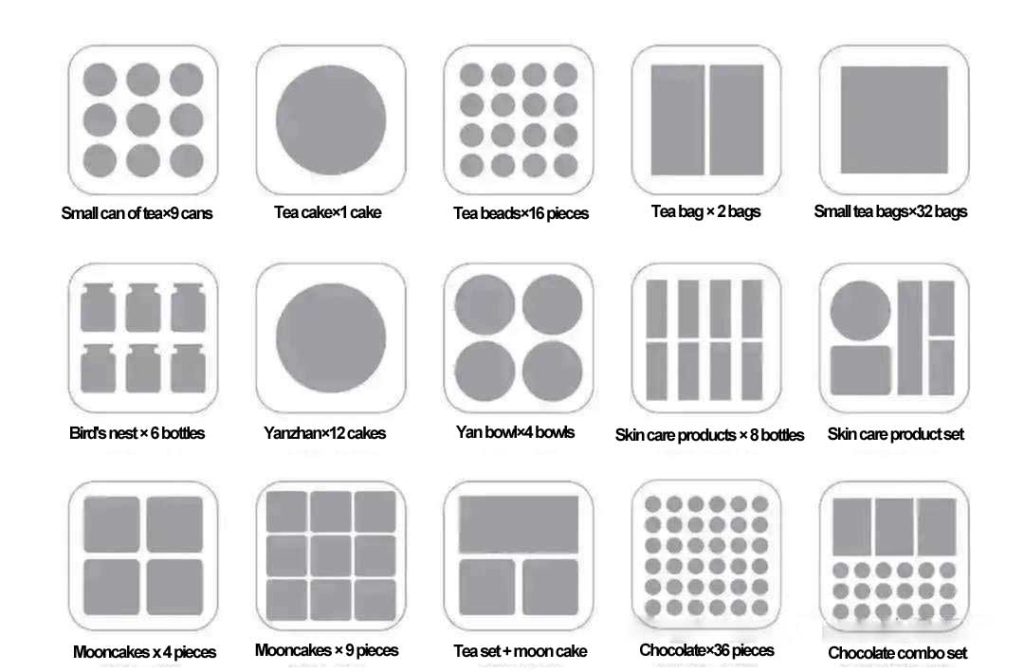
Public mold is becoming a popular choice for paper mold design as it plays a unique role in pulp molding industry. These molds are used to make disposable fast food dishes, gift box packaging, and beauty packaging. They offer versatility due to their simple shapes, making them suitable for various product packaging requirements, especially under low budget or tight time conditions. Pulp-molded packaging suppliers can modify the public mold by adjusting the lining and outer packaging to meet the needs of different products. By customizing surface patterns through debossing, sculpting, hot stamping, and more, pulp-molded packaging can acquire diverse characteristics at a relatively low cost.
